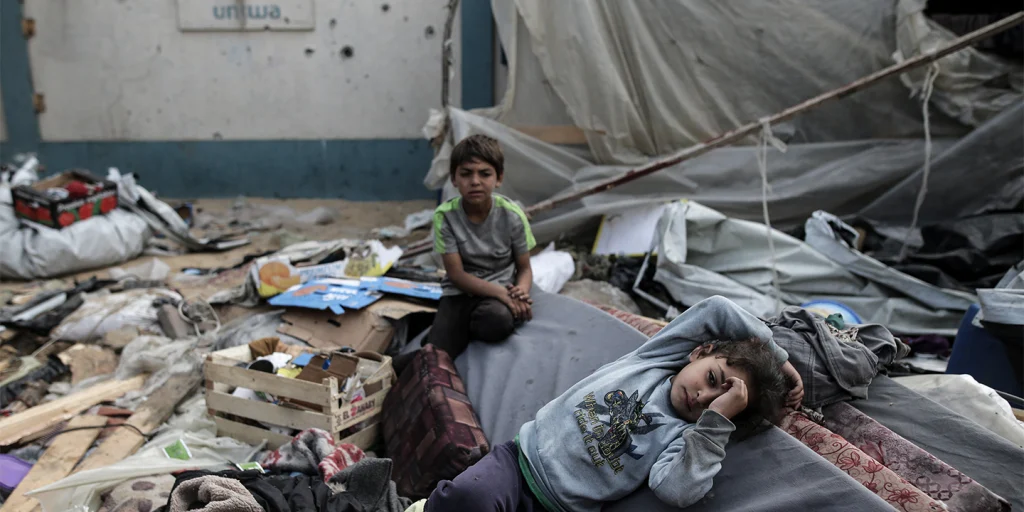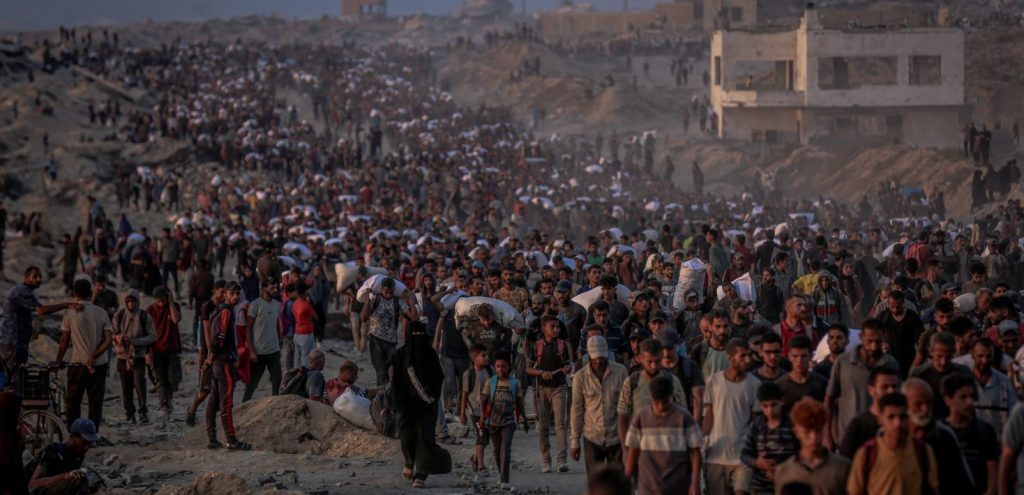
None of this is normal, I keep telling myself as I scroll. A mother’s scream bleeds through a shaky livestream, her child’s body wrapped in a bloodied white sheet. I swipe and it’s gone, replaced by a cat video, a sneaker ad, a reminder to drink more water. The platforms package horror and humour in the same frame, giving grief and laughter equal weight. The algorithm insists that catastrophe, comedy and consumption belong together, that they cost the same in this marketplace of attention.
None of this is normal, yet it has been rendered ordinary.
I recall when news arrived with a different gravitas. War was something confined to newspapers, reports that could be folded and put away, or television bulletins at scheduled times, promptly followed by The A-Team. Now war lives in my pocket, buzzing at two in the morning, demanding that I look, insisting that I bear witness.
Yet even the act of witnessing feels contaminated. Am I meant to mourn, to condemn, or merely to scroll? Am I complicit in turning catastrophe into spectacle? The state of the world insists on collapsing itself into screens, and the screens flatten everything.
The collapsing of worlds happens with each flick of the thumb. The livestream of an Israeli bomb strike is seamlessly followed by a recipe tutorial. Images of mass graves sit beside adverts for wellness apps. The platforms encourage a rhythm of attention that is both relentless and trivial, where horror is always adjacent to frivolity.
The result is a dissonance that corrodes the possibility of grief. How can I honour the dead when they appear in the same feed as a joke about the weather? How can I resist numbness when the structure itself enforces distraction?
This isn’t simply a matter of design, but a deeper corrosion of the categories through which we make sense of the world. Tragedy once belonged to rituals of mourning, mediated by journalists, diplomats, and community elders. Now it belongs to timelines.
A livestream from Gaza is not just testimony, it is content, slotted into the same economy of clicks and shares as celebrity gossip. It is a form of knowledge, yes, but also a form of entertainment, consumed with the same mechanics. The horror of the feed is not that it conceals violence, but that it packages violence as something to see and scroll past.
At the centre of this spectacle is Gaza itself. Families disappear beneath rubble in real time, their lives archived in shaky videos, their names trending briefly before they vanish. Politicians call this collateral, commentators call it complex, but the faces are plain.

The fathers with dust-streaked hands, the children carried limp through shattered streets, the mothers screaming at cameras as if their grief might pierce through to those watching thousands of miles away. The spectacle of genocide is dressed in the language of ambiguity. Yet even as euphemisms dominate political discourse, the livestream insists on a different clarity.
What I see is not complex; it is murder. What I hear is not collateral, it is grief.
The danger is that such clarity is lost when atrocity is absorbed into the churn of images. Watching becomes a habit, not a rupture. I fear that in bearing witness I risk becoming a voyeur. I open the feed at night and watch the rubble, the screaming, the blood. I share a video, perhaps to assuage guilt, maybe to register outrage, but then I move on.
The algorithm rewards my moment of attention and pushes me towards something lighter. The horror becomes both inescapable and strangely disposable. My participation feels compromised. Am I mourning, or am I consuming?
This question haunts me because the ethics of witnessing are fragile. To watch is not neutral. To look and then look away may already be a form of complicity. Yet silence feels equally intolerable. To ignore is to abandon, but to absorb tragedy as spectacle is to risk desecration. Between voyeurism and abandonment lies an uneasy position, one that demands constant self-interrogation.
In this space, resilience itself begins to feel corrupt. We are told to adapt, to continue working, to be productive even as the world burns. But what does it mean to be resilient in the face of atrocity? Too often it means learning to scroll past, to file genocide alongside entertainment, to pretend that the juxtaposition itself is survivable.
The idea of normality reveals itself as both fragile and violent. Normality demands that we carry on with daily routines, that you perform composure in the workplace, that I speak of “events” in neutral tones. Yet what is normal about a world in which families are slaughtered live before an audience of millions? What is normal about collapsing homes, children crying in hospitals without power, parents burying children under siege?
To insist that this … all this … can coexist with schedules and spreadsheets and supervisors, dinner plans and small talk, is to insist on a profound denial. Normality becomes a weapon, silencing grief, erasing outrage, demanding that we adjust to the unacceptable.
This pattern is not confined to Gaza. It extends across global crises. We have normalised mass killings, normalised rising seas, normalised the march of authoritarianism. Each catastrophe is swallowed into the category of “the new normal”, as if the only option available is adaptation. But adaptation, in this form, is surrender. It is a refusal to name what is intolerable. To call this world normal is to collude in its violence.
I do not want to collude. I want to refuse. Refusal doesn’t mean turning away, nor does it mean retreating into despair. It means holding space for grief without trivialising it, acknowledging atrocity without letting it dissolve into entertainment. It means naming genocide as genocide, rejecting the language of complexity when the evidence is plain. It means carrying the weight of these images not as passing content, but as testimony that demands transformation.
Small acts of resistance matter. To refuse to call this normal is to preserve the possibility of a different world. To refuse euphemism is to honour those who are silenced. To let grief interrupt the flow of daily life is to resist the flattening of experience that the feed enforces. None of this is normal, and I must keep repeating it, not as a lament but as a declaration. The words are a thread to hold onto, a reminder that complicity begins with silence, that normality is a dangerous lie.
None of this is normal. Not the livestream of a toddler screaming over his parents’ bodies, not the seamless shift to Jordan ads, not the polite language of politicians justifying murder. None of it can be normal; to live in this world is to risk numbness, but to refuse normality is to resist erasure.
I cannot unsee what I have seen, and I cannot repair what has been destroyed, but I can at least insist that atrocity is not a backdrop to my daily life. I can at least insist that we resist.
None of this is normal, and we shouldn’t let it become so.